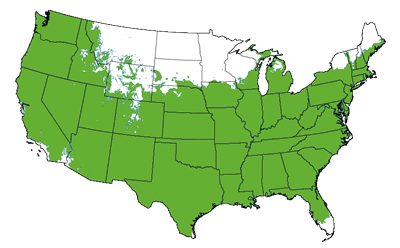Lavender Twist Weeping Redbud Tree
Product Details
 Growing Zones 5-9
Growing Zones 5-9
| Soil Type | Adaptable, Well Drained |
| Sunlight | Full, Partial |
| Drought Tolerance | Good |
| Mature Height | 6-10 Feet |
| Mature Width | 6-10 Feet |
| Growth Rate | Moderate |
| Bloom Color | Pink |
| Shipping Restriction | AZ, OR |
Cascading twisted branches display petite pink-tinted lavender-colored blooms for 3 to 4 weeks in early spring. As the mature blooms fade, bright green heart-shaped foliage will begin to grow. Companion plants for the lavender twist redbud tree include Virginia bluebells, daffodils, candytuft, and woodland phlox. The weeping lavender twist reaches heights of 5 to 15 feet at maturity and thrives in zones 5-9.
When should a Lavender Twist Weeping Redbud be pruned?
It is best to prune any variety of redbud tree in the spring after the flowers have finished blooming.
How long do Lavender Twist Redbud blooms last?
The pink tinted lavender blooms last for approximately 3 to 4 weeks.
When should I fertilize a weeping redbud?
A slow-release fertilizer should be applied in early spring for best results.
Apply a general purpose fertilizer in early spring prior to the first blooms of the season. These hardy trees are drought tolerant and don’t need excessive amounts of water. The low maintenance Lavender Twist can be kept in a container but only in zones 7-9, as the container lacks imperative insulation needed to protect the root system during the colder winter months of zones 5 and 6. Avoid moving the container into a heated area during the winter months. These trees rely on the cold winter temperatures to set the flower buds for the upcoming spring.
Planting
Locations with full morning sun, afternoon shade, and a moist well-draining soil are ideal accommodations for these easily maintained trees. Lavender Twist Redbuds are not easily transplanted so select a spot in your landscape where this magnificent variety will flourish for years. For optimal growth, additional Lavender Twist Redbud trees should be spaced at a minimum of 10 feet apart.
Watering
This weeping redbud tree thrives with weekly waterings. This should be increased if your area experiences lengthy dry spells.
Fertilizing
A general purpose fertilizer should be applied in early spring prior to the first open blooms.
Maintenance
Pruning is not necessary unless a specific shape or look is desired. The ideal time to prune any unwanted branches or growth is in the spring just after the flowers have transitioned to the beautiful heart-shaped green foliage. Branches that are growing directly above or below one another should be pruned back to about a 1/2 inch from the trunk to promote an aesthetically pleasing form. Any other stems can be cut back to a bud, branch, or the trunk, ensuring that a 1/2 inch stem is left on the trunk.












